Sindhi Embroidery -An Introduction
Sindh has been always known for its craftsmanship since pre partition era, and its crafts have been popular the world over. The enterprising Sindhi Hindu businessmen saw a market for Sindhi crafts such as pottery, leatherwork, weaving, block printing, lacquer work, tie and dye, quilts, embroideries, etc and travelled abroad to sell them. Sindhi women created exquisite and colourful embroidered pieces using various stitches and motifs which were in great demand everywhere. While the urban housewives embroidered bedsheets, pillowcases, dresses or children’s clothes during their leisure time, it was the rural women, especially the ones living in the Thar areas of Sindh, who created pieces that were sold in the markets.
Post partition, the Hindu Sindhis got scattered all over India; some left for other countries in search of livelihood – and in this battle for survival, the Sindhis had to sacrifice their culture, their food, their way of living-their very identity itself – to blend in with the local milieu. Those who moved from the Thar to Kutch or Rajasthan kept some of the crafts as such embroidery and mirror work, ajrak block printing or leatherwork alive. Among the scattered urban families, there were some women who carried on with their skill of needlework.
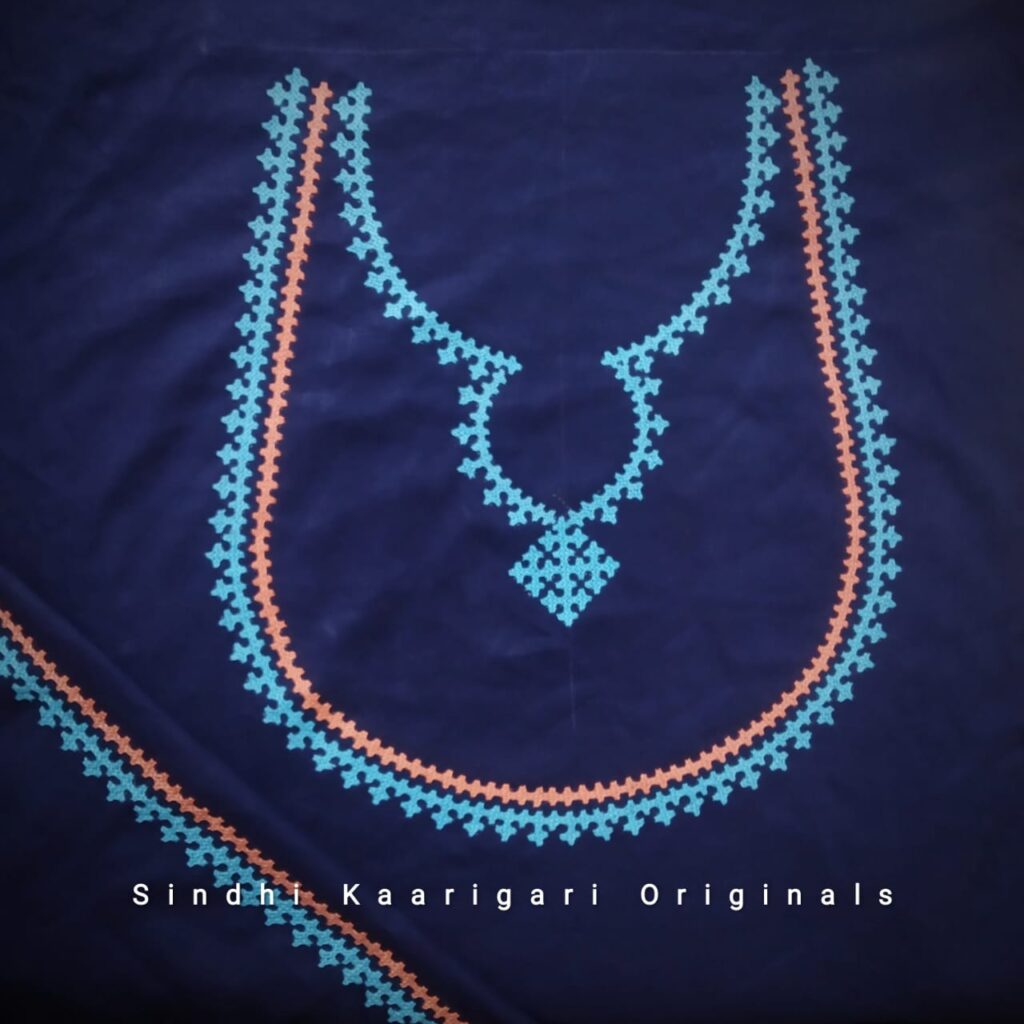
Neha Khatnani belongs to one such Sindhi family from Gorakhpur, UP, that continued the legacy of embroidery. She learnt needlework from her elder sister at the age of 15 and once she mastered this skill, there was no looking back for her. Today she sells her beautiful work and is very proud to be a part of this Sindhi heritage. Let’s read in her words about her love for Sindhi embroidery and its future in today’s world.
In Frame: Sindhi Embroidery
My Sindhi Background
“My great grandparents lived in Bade Panne, Sindh, and lead a comfortable life there. My great grandfather taught in a school. However, during the partition, like most Sindhis, my ancestors had to uproot themselves and come to India and live in refugee camps. Later on, they got a property in Gorakhpur, in exchange for the one they had left behind in Sindh. Today we live amongst other Sindhis who have left their homeland, Sindh, behind and have made a life for themselves in Gorakhpur.”
What is Sindhi Embroidery
“Sindhi embroidery is referred to as Hurmucho. Any Sindhi motif or buti is called as Sindhi taanka. The pictures show different taankas used in Sindhi embroidery.
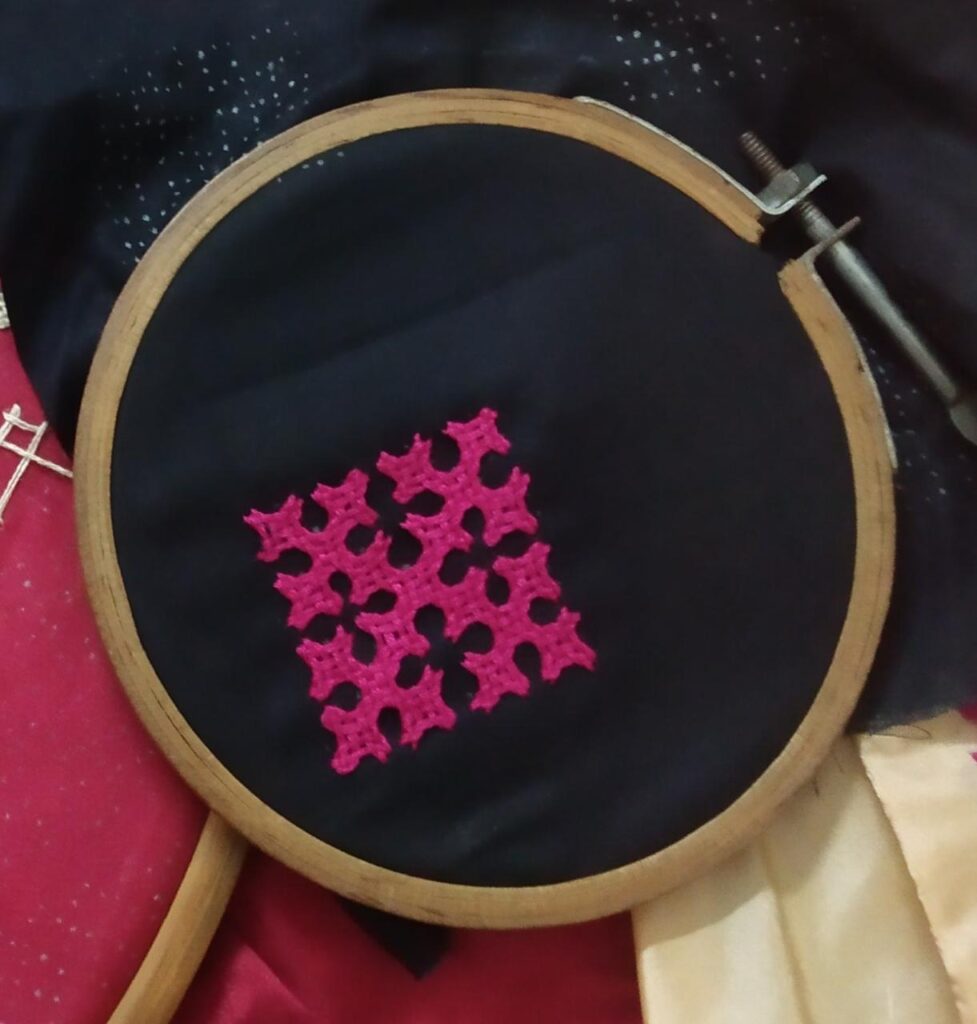
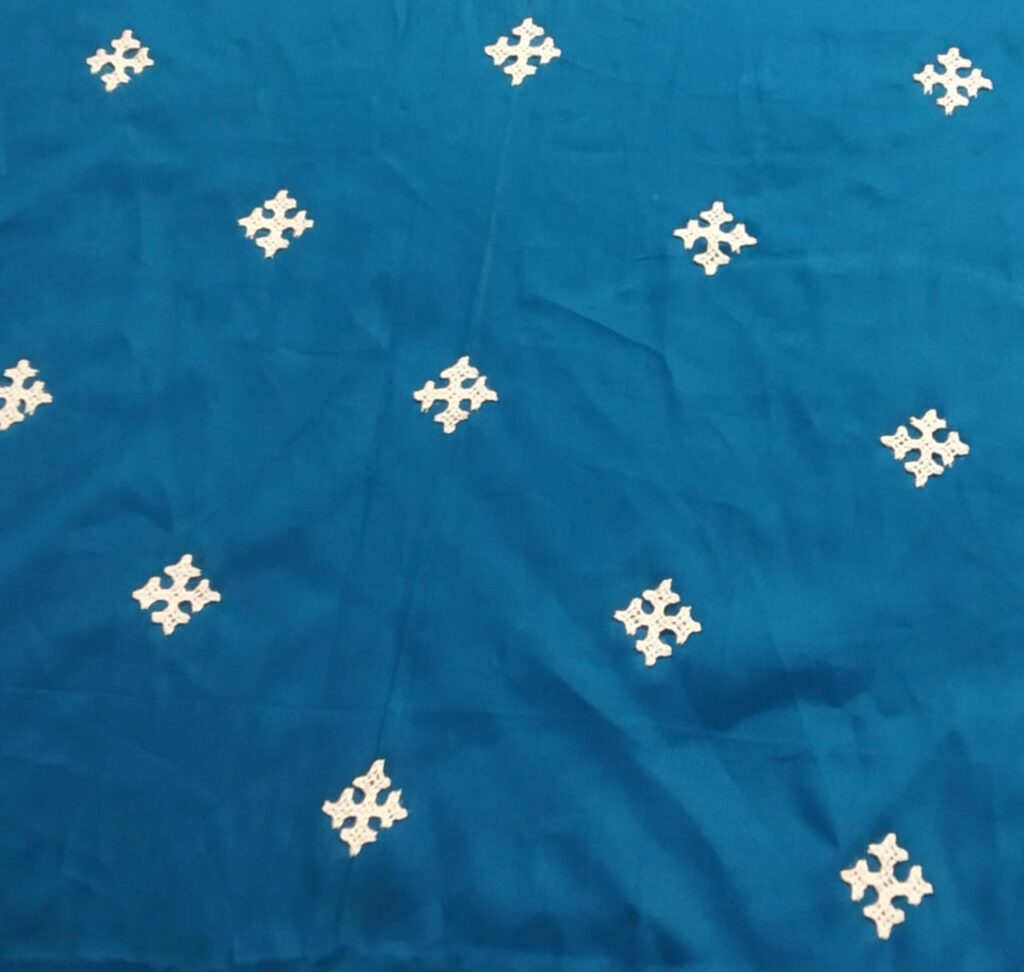
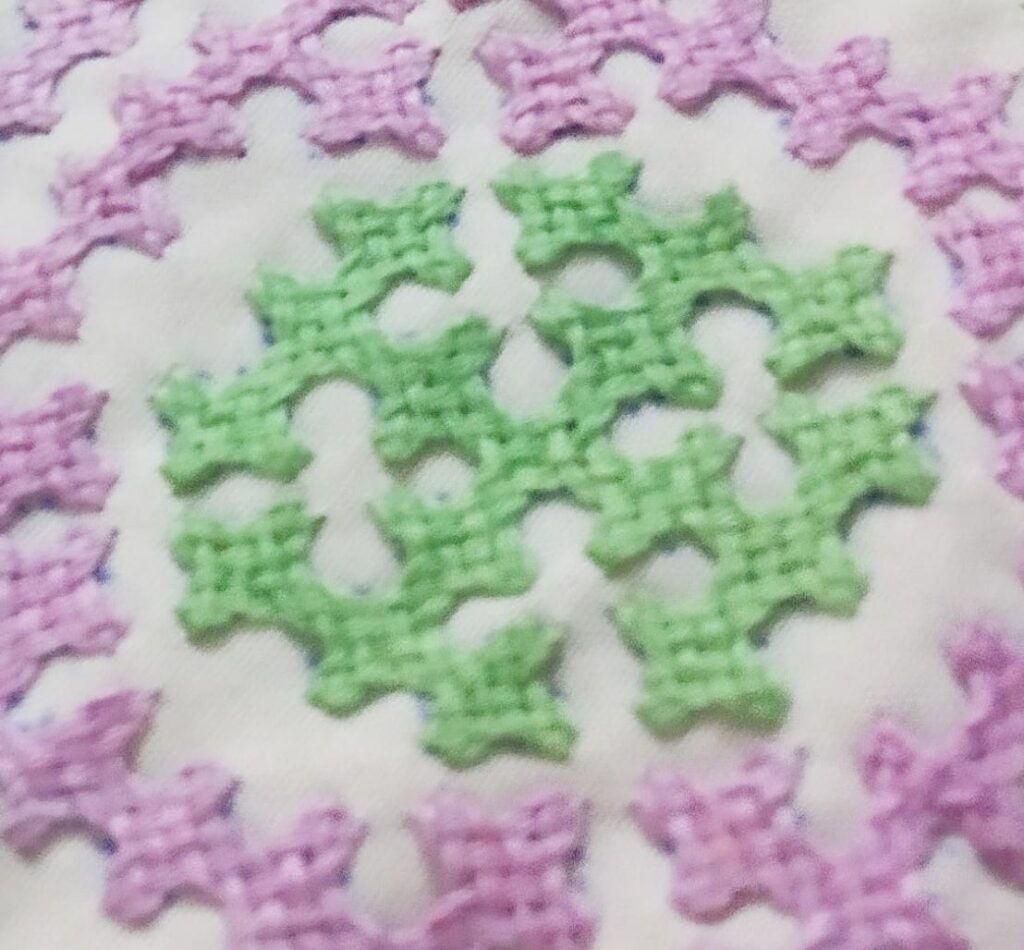
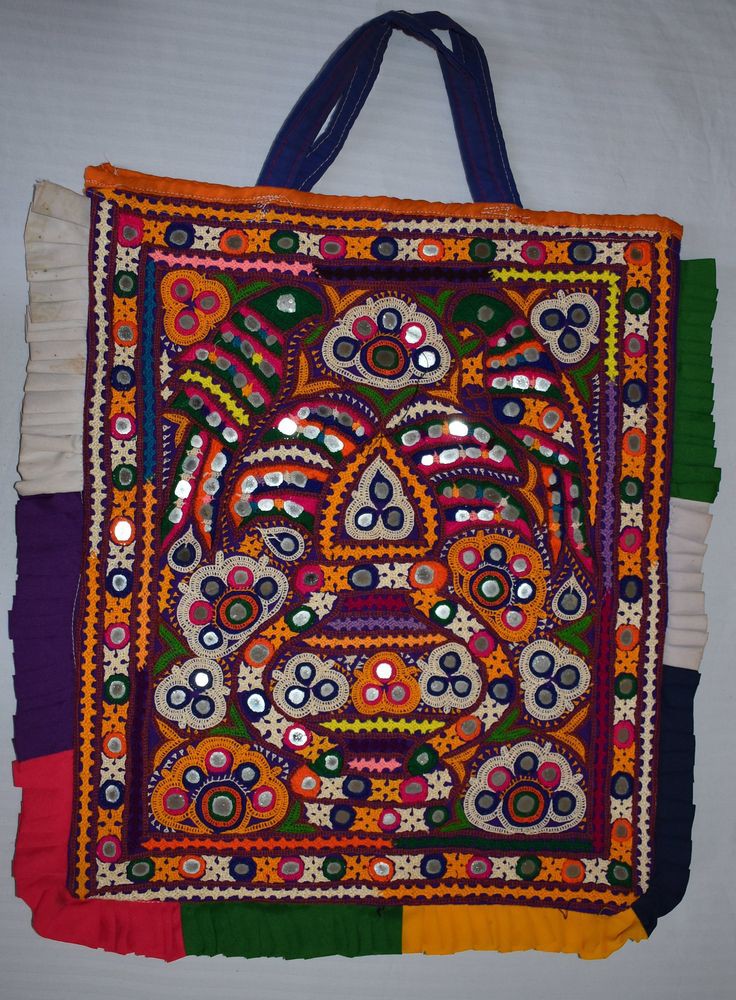
People refer to Sindhi embroidery as Kutchi work but they both are entirely different. Kutchi work is generally a combination of two or more embroidery stitches including Sindhi taankas and mirrors.
In Frame: Kutchi Embroidery with Sindhi taankas and mirror work
My Love for Sindhi Embroidery
“I was always inclined as a child towards creative interests such as drawing and sketching. But once I learnt to embroider, I entered a whole new world of creativity. I love researching new designs and motifs on the Internet. I focus mainly on making Sindhi embroidery motifs on fabrics, though I sometimes incorporate mirrorwork or other embroidery stitches such as chain stitch, stem stitch or leaf stitch to enhance the beauty of the piece. I have also taught myself other forms of embroideries such as Zari work, Aari work and Chikankari. But my first love has always been Sindhi embroidery. I am now experimenting using this art in designing jewellery. I have made earrings using Sindhi motifs and plan to have an entire jewellery set using the same.”

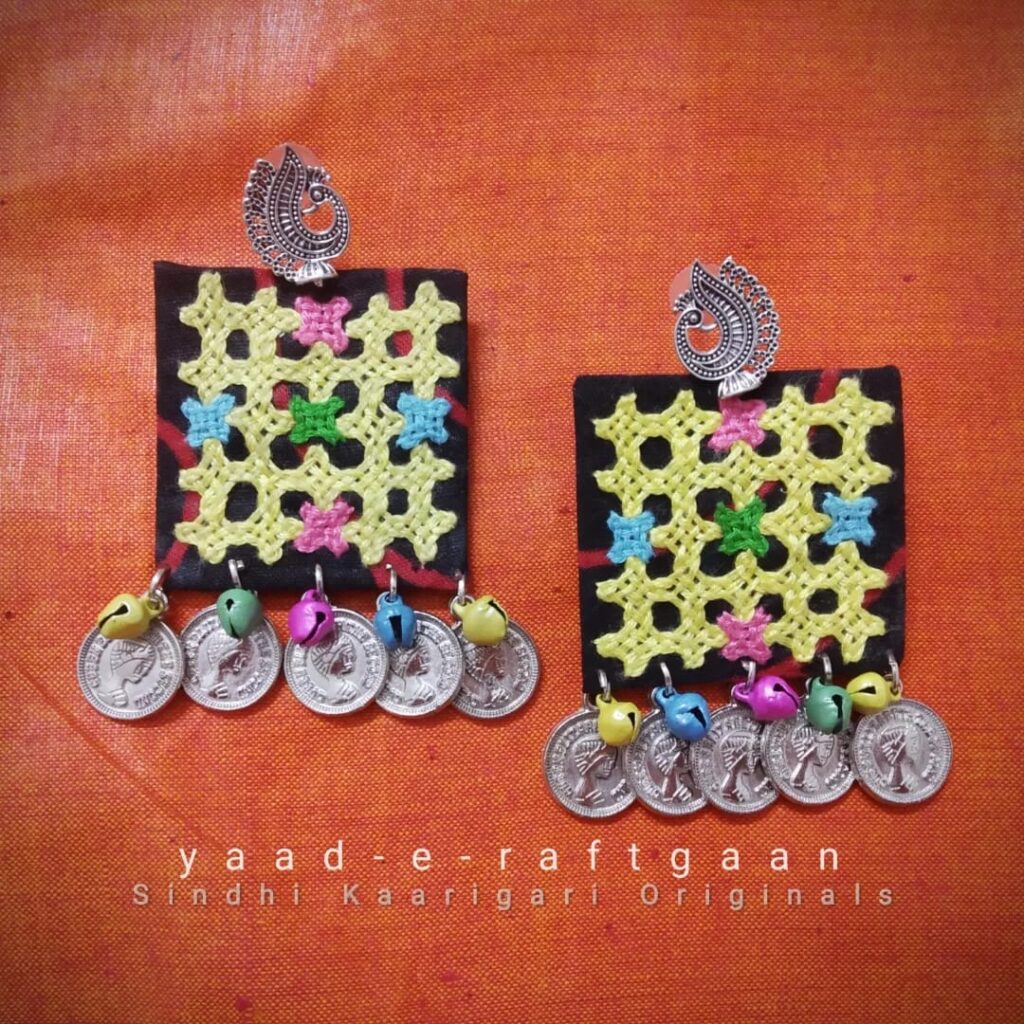
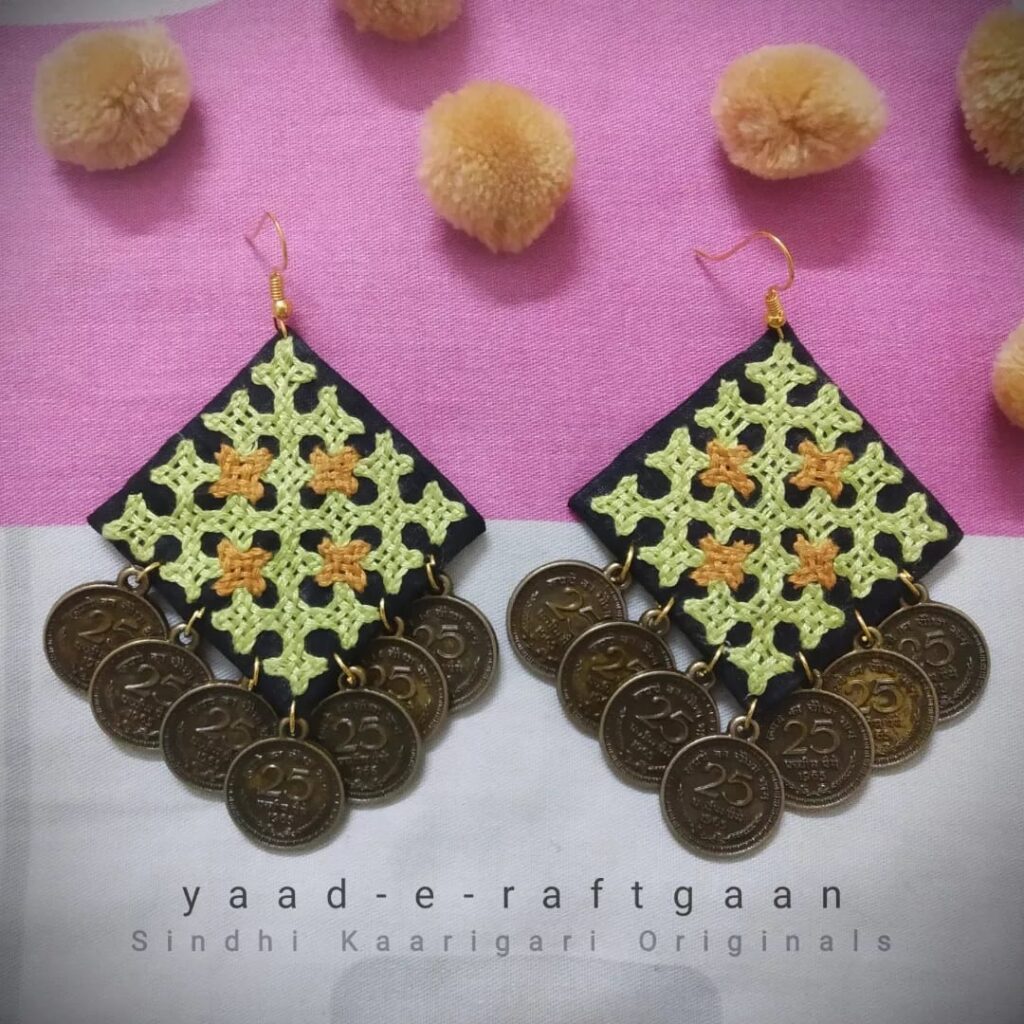
My Sindhi Embroidery Business
“Thanks to the Internet Revolution, people started showing their talent on various social media platforms. I too joined the trend and shared my work, which was appreciated. Soon, people wanted to buy my creations and I started selling my work. I have received a good response to my creativity which motivates me to experiment and create. But there are more spectators on any platform than actual buyers. Few people can understand the amount of time and painstaking effort involved in creating a piece.”
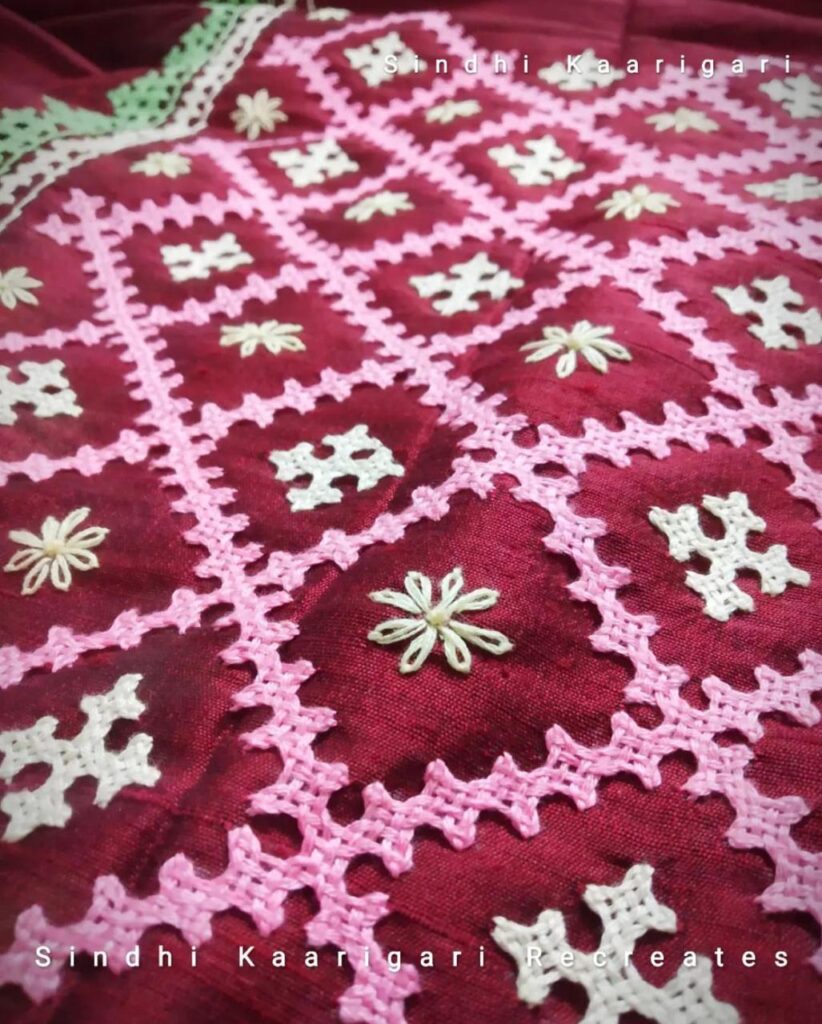
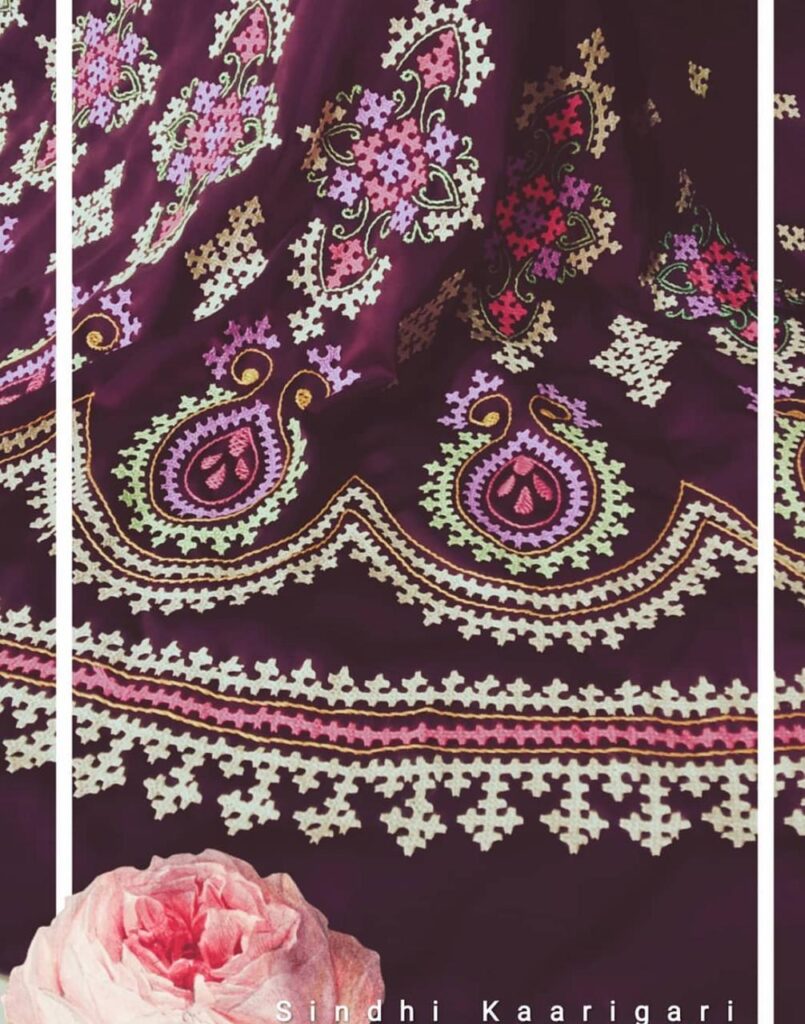
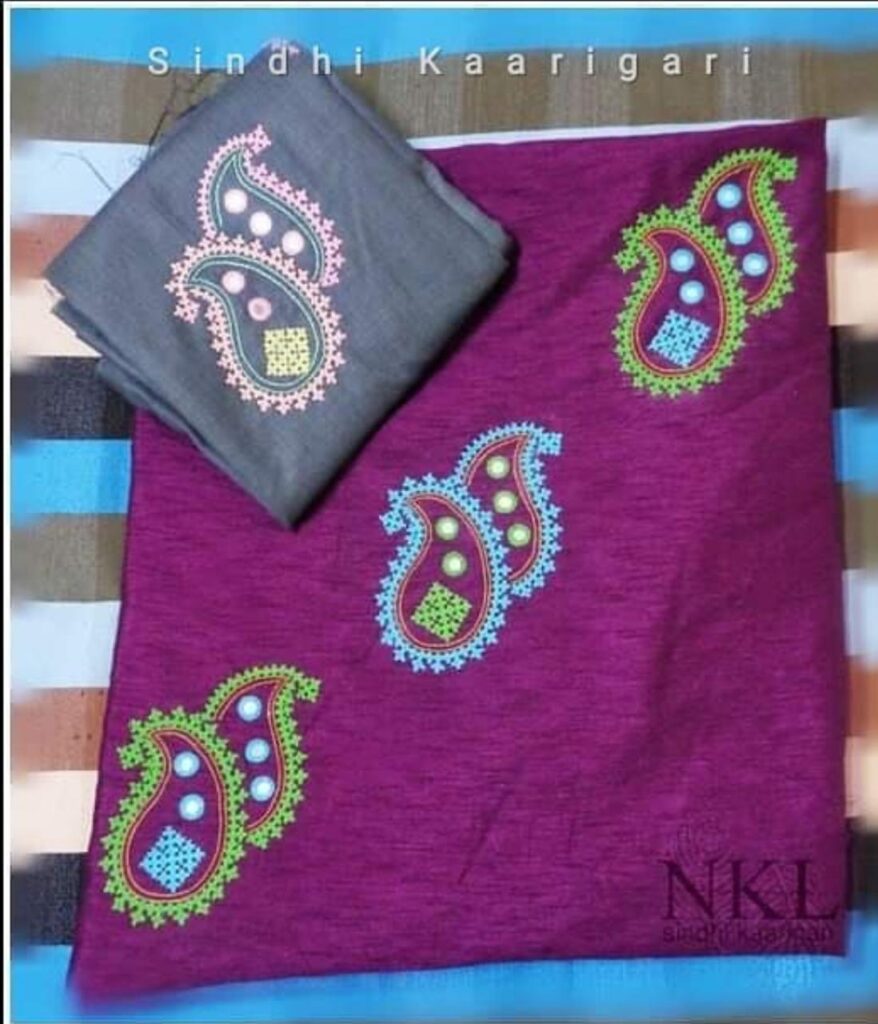

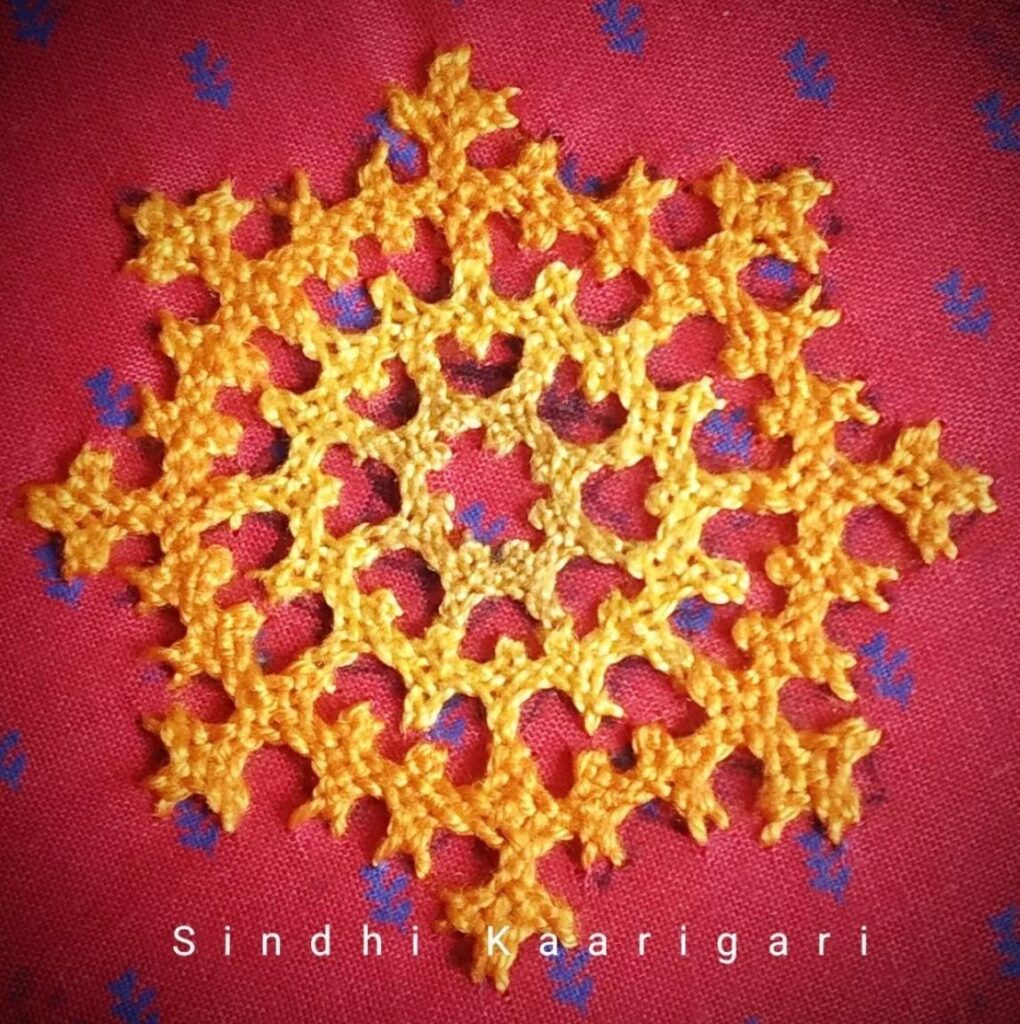
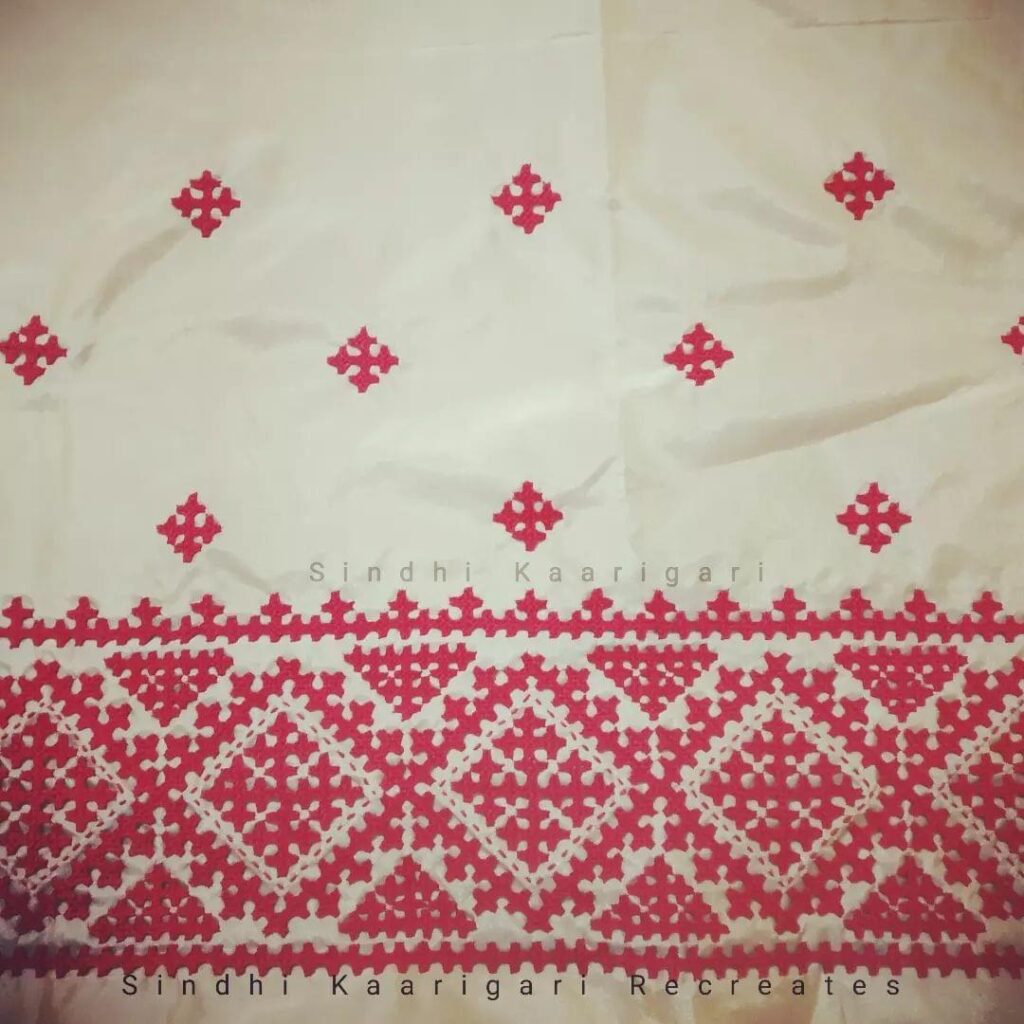
The Future of Sindhi Embroidery
” Any handcrafted work is very precious. Earlier, hand embroidery was appreciated as a skill, but today industrial replicas have taken over the market. There is a demand for embroidered work, but with very few skilled artisans providing genuine pieces, the cost of such work is high. The embroiderer is given a fraction of this amount, with the middleman pocketing the chunk of the profits. That’s why the number of people doing this work is reducing, giving rise to cheap and fake copies of the original. Today, people want to make quick money, and embroidery is definitely time-consuming. So, eventually, less people are interested in learning it.”
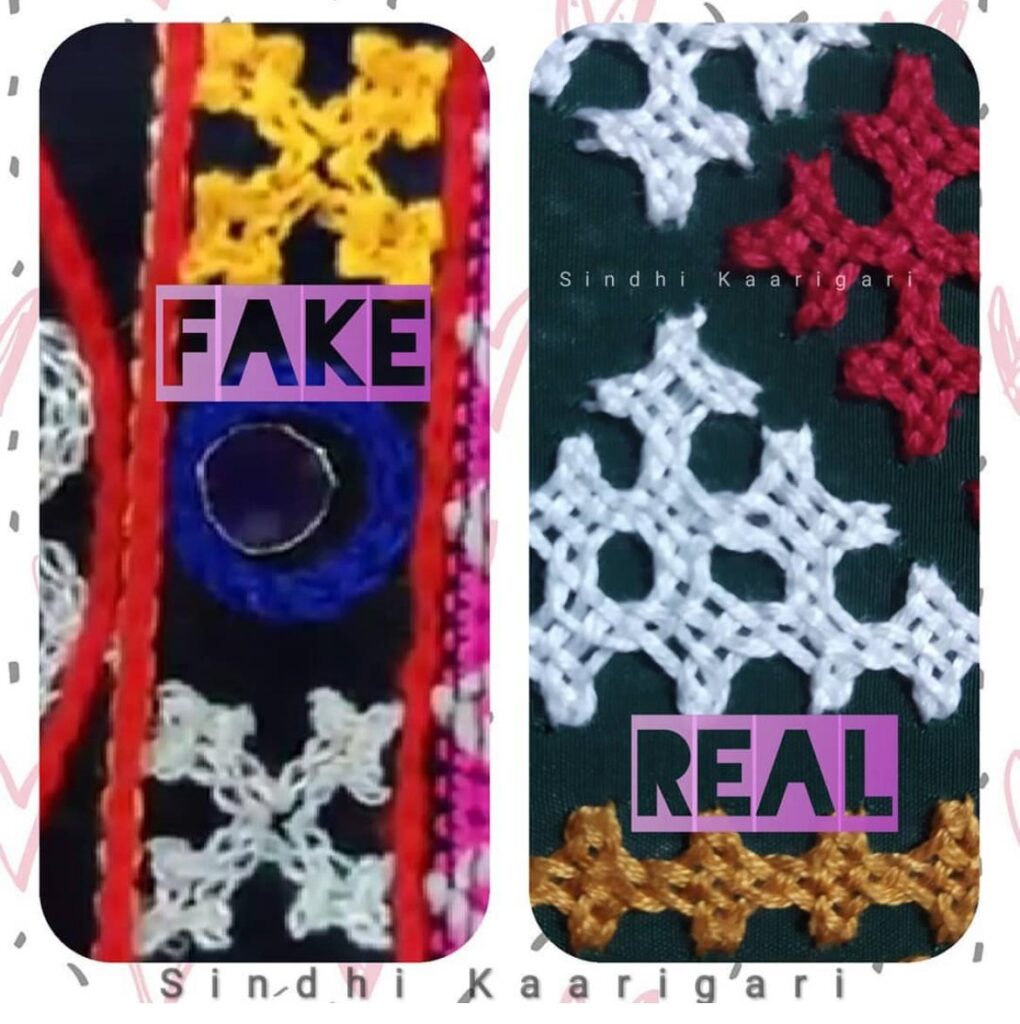
In Frame: The difference of the quality of work between real and fake embroidery
How to Revive Sindhi Embroidery
“Handicrafts are an integral part of our cultural heritage, which is dying a slow death. Along with food and language, Sindhi embroidery is also a valuable asset left by our ancestors. It is our Sindhi identity – it belongs to us and is part of who we are. We must preserve our art forms as much as our language and culture. We need to respect and revive our Sindhi embroidery by including it back into our lives again.”
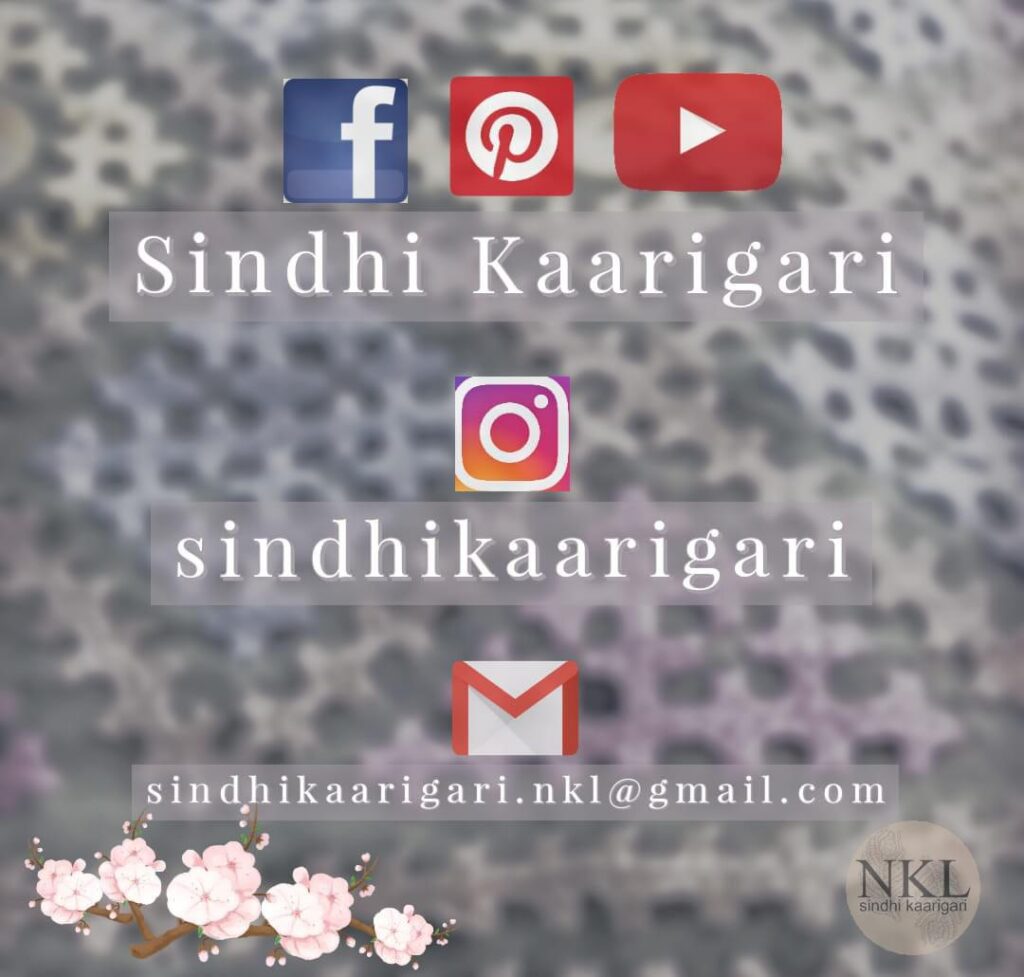
Note by the Author: Ms. Neha Khatnani can be contacted for business at the given accounts.
Written by Jyoti Mulchandani
Ahmedabad
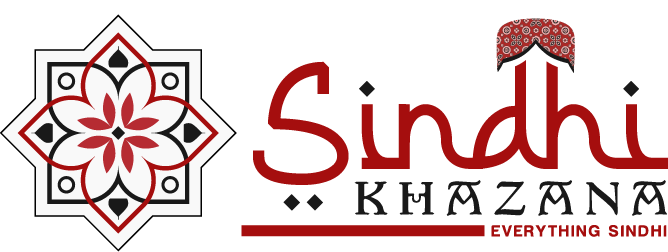
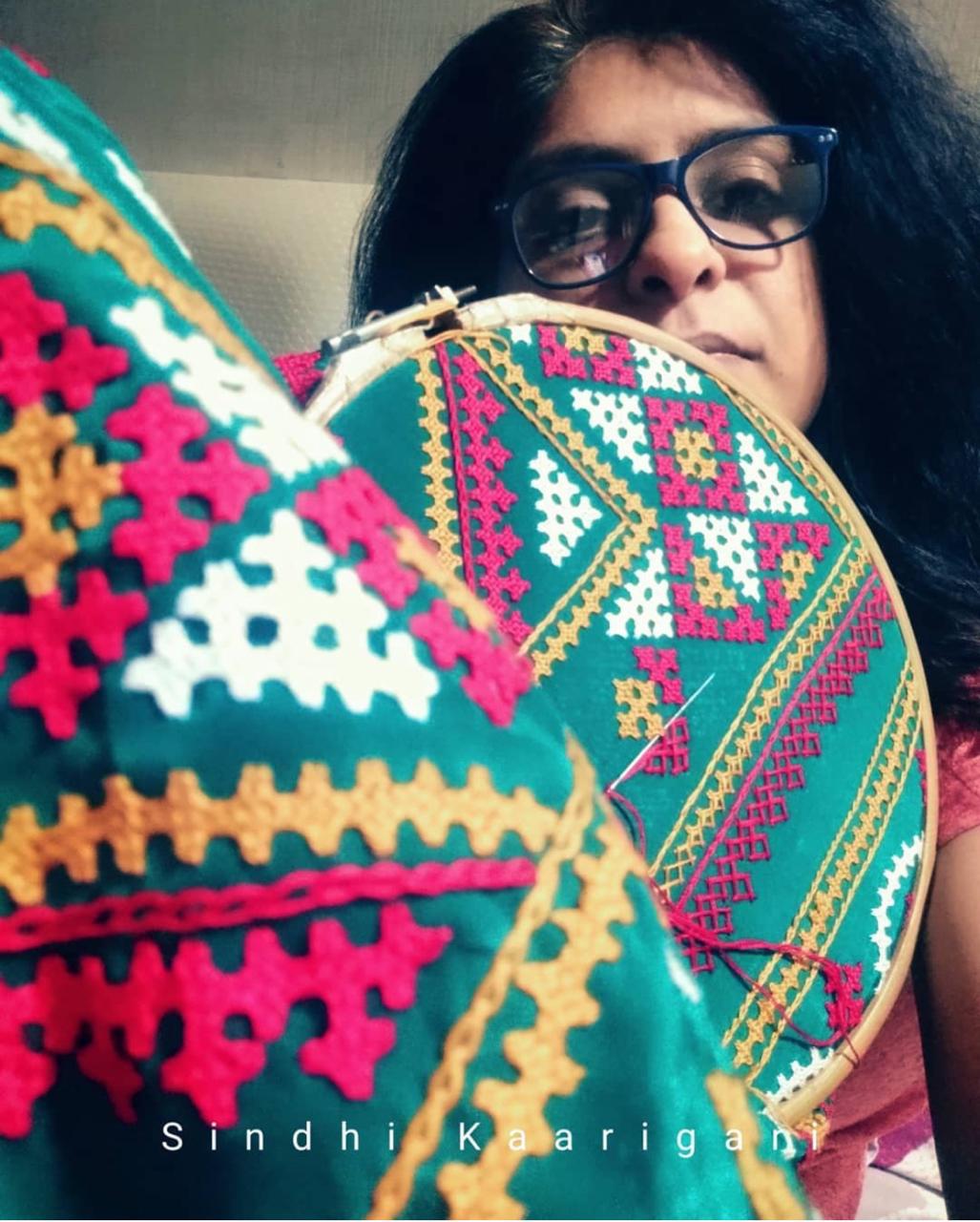
Great work
Keep it up
बहुत ही कम लोग हैं अब जो अपनी परंपरा और विरासत को संभाले हुए हैं आपका प्रयास बहुत ही सहारनिय है, आपको बहुत-बहुत बधाईयां आपके काम के लिए आप यूं ही इस क्षेत्र में आगे बढ़े।
I really like ur effort, it’s most valuable identification of our religion ,wich you have and wich you share with us . I really thanks full to you.